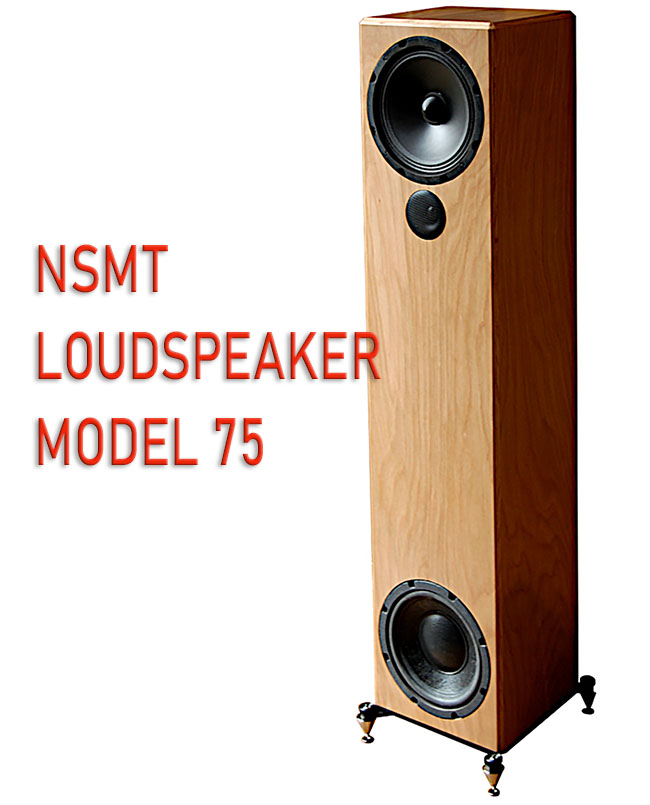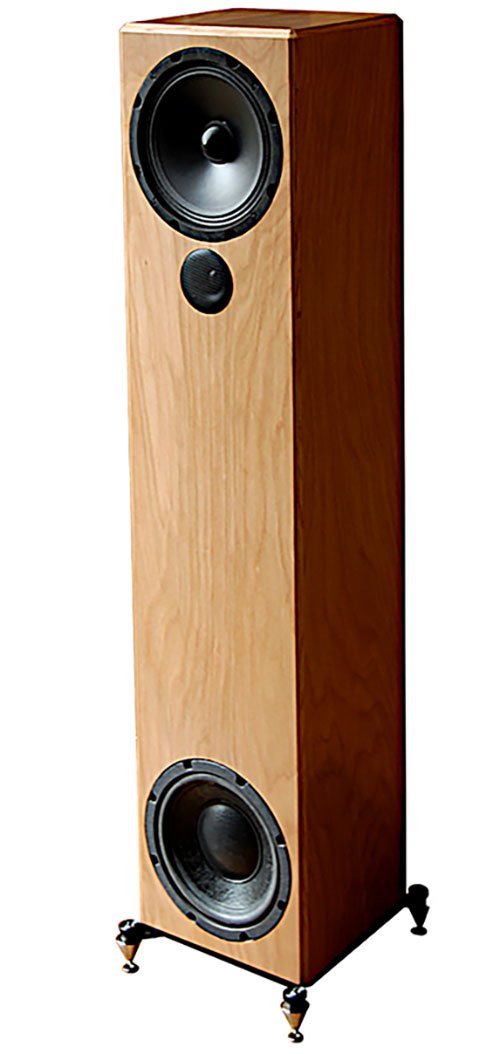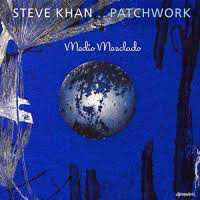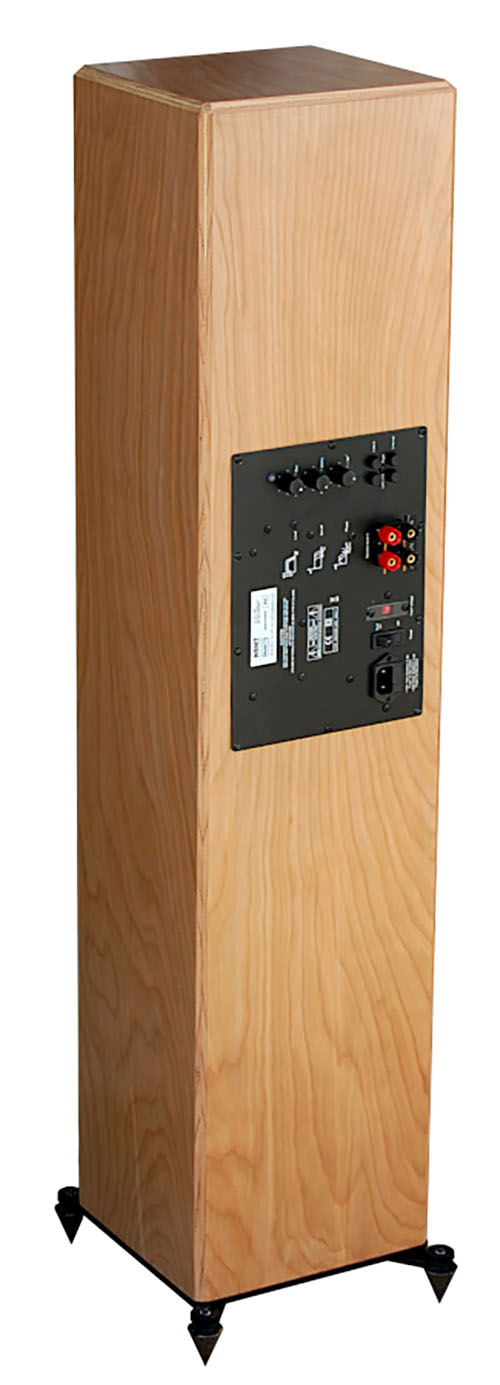NSMT Loudspeaker Model 75 by Terry London

 I have a long history of reviewing the different speaker models (a total of five) from the NSMT Loudspeaker Company, located in Research Triangle, NC. This thirty-year-old company is owned by Erol Ricketts, who designs, and hand-builds every model that’s on its way to a lucky customer. Erol’s overall philosophy is to use non-metallic fiber drivers for their natural timbres and tonality, no crossover, or the most minimal crossover design possible, to get seamless integration between drivers. He implements different two-way designs using a full-range driver to cover close to ninety percent of the music’s frequency range. He augments the high frequencies with soft dome tweeters (usually time-arrayed or waveguide loaded) and the bottom end with passive transmission line bass loading, active acoustic suspension, or band-pass subwoofers. I believe the best speaker designers, which would include Mr. Ricketts, can take their ultimate design goals produced in their reference models and bring these sonic virtues to the less expensive models in their stable. In the case of NSMT Loudspeakers, starting with the reference Model 100, which I put on the Stereo Times list of “Most Wanted Components of the Decade,” you get the following superlative sonic characteristics throughout the entire line of speakers. NSMT speakers are tremendous in their portrayal of spatial qualities. They produce an amazing three-dimensional soundstage that is accurate, in size and placement, of the instruments on that stage with a sense of the ambiance of the recording venue. Next, they all have very natural timbres and tonalities delivered with pristine clarity. As I have shared in numerous reviews, the most important aspect of musical reproduction for me, to enjoy and be engaged in the music, is overall natural/realistic tonality. Every NSMT model I have reviewed has produced these qualities of timbres and colors engagingly. They present octave-to-octave seamlessness that contributes to overall ease and liquidity to the listener. Finally, because Erol is an expert at passive transmission line loading, active acoustic suspension, and band-pass internal sub-woofers, each NSMT model produces accurate extended bass. The larger models (the 75 and 100) will pressurize any size room. This bass extension is quite remarkable based on the relatively small footprint of each speaker.
I have a long history of reviewing the different speaker models (a total of five) from the NSMT Loudspeaker Company, located in Research Triangle, NC. This thirty-year-old company is owned by Erol Ricketts, who designs, and hand-builds every model that’s on its way to a lucky customer. Erol’s overall philosophy is to use non-metallic fiber drivers for their natural timbres and tonality, no crossover, or the most minimal crossover design possible, to get seamless integration between drivers. He implements different two-way designs using a full-range driver to cover close to ninety percent of the music’s frequency range. He augments the high frequencies with soft dome tweeters (usually time-arrayed or waveguide loaded) and the bottom end with passive transmission line bass loading, active acoustic suspension, or band-pass subwoofers. I believe the best speaker designers, which would include Mr. Ricketts, can take their ultimate design goals produced in their reference models and bring these sonic virtues to the less expensive models in their stable. In the case of NSMT Loudspeakers, starting with the reference Model 100, which I put on the Stereo Times list of “Most Wanted Components of the Decade,” you get the following superlative sonic characteristics throughout the entire line of speakers. NSMT speakers are tremendous in their portrayal of spatial qualities. They produce an amazing three-dimensional soundstage that is accurate, in size and placement, of the instruments on that stage with a sense of the ambiance of the recording venue. Next, they all have very natural timbres and tonalities delivered with pristine clarity. As I have shared in numerous reviews, the most important aspect of musical reproduction for me, to enjoy and be engaged in the music, is overall natural/realistic tonality. Every NSMT model I have reviewed has produced these qualities of timbres and colors engagingly. They present octave-to-octave seamlessness that contributes to overall ease and liquidity to the listener. Finally, because Erol is an expert at passive transmission line loading, active acoustic suspension, and band-pass internal sub-woofers, each NSMT model produces accurate extended bass. The larger models (the 75 and 100) will pressurize any size room. This bass extension is quite remarkable based on the relatively small footprint of each speaker.
 I asked Erol to provide information for this review regarding what his design goals were for the Model 75 loudspeaker: “The new Model 75, which retails for $6,995, which is now being sold for a special introductory price of $5,550, was designed to fill the gap in price range, physical size, and performance between the Model 50, which retails for $2,795, and the Model 100, which retails for $12,995. Some sentimentality was involved in reintroducing the Model 75 to the current line of NSMT Loudspeakers because the original Model 75 was manufactured in 1991 when the company was then known as NSM Loudspeakers.
I asked Erol to provide information for this review regarding what his design goals were for the Model 75 loudspeaker: “The new Model 75, which retails for $6,995, which is now being sold for a special introductory price of $5,550, was designed to fill the gap in price range, physical size, and performance between the Model 50, which retails for $2,795, and the Model 100, which retails for $12,995. Some sentimentality was involved in reintroducing the Model 75 to the current line of NSMT Loudspeakers because the original Model 75 was manufactured in 1991 when the company was then known as NSM Loudspeakers.
The new Model 75 is more than a worthy successor to the original speaker. A more powerful loudspeaker that surpasses the old model’s 75’s reputation for “imaging on the next block .”It also has better resolution and a more extended bass response. The new Model 75, despite being significantly more powerful, takes up even more of a paltry of floor space by having a small footprint that is only nine by nine and a half inches.”

The Model 75 loudspeaker is built out of natural Birch plywood. Each speaker weighs 52 pounds. It is a time coherent, minimum phase design. The dimensions are 42” high x 9.5” wide x 9” deep. Each Model 75 loudspeaker is provided with a high-quality set of metal out-riggers with spikes to ensure acoustic isolation and physical stability. On the front baffle starting with the highest driver location is the 8” painted paper cone midrange driver. Just below it is the 1” soft dome tweeter. The lower part of the baffle is where the 8” painted paper cone active sub-woofer is located. A 300-watt digital amplifier drives it. Around the back are two high-quality sets of speaker wire terminals that accept either banana plugs or spades. You can use a jumper for single wiring or bi-wire the Model 75s if you desire. The efficiency of the Model 75 is 96.5dB. Its frequency response is 26Hz to 20kHz plus or minus 2.5dB. The Model 75’s rated impedance is 8 Ohms. Internally, the Model 75 uses a second-order crossover to the tweeter and is crossover-less between the midrange driver and the active acoustic suspension sub-woofer. It is internally wired with very high-quality multi-strand copper wire. Like all NSMT speakers, the Model 75, because of both its efficiency and rated impedance, with no steep impedance curves, works beautifully with SET “flea watt” amplifiers and performs terrifically with high-powered solid-state amplifier designs. I have found the build quality, materials, and visual appearance of past NSMT speakers to be at the highest levels found in the high-end industry, and the Model 75 delivered in these areas just like its siblings had in the past.
The Model 75s, during the reviewing process, was set up with my reference system, which sits in a very large acoustic space (30’ wide x 30’ deep x 25’ high), replacing its larger sibling, the Model 100, and were positioned in the same location for optimum performance. Even in this massive listening space, this petite-sized speaker effortlessly pressurized the room with taut percussive bass frequencies. The one noticeable adjustment to get the exact top-end frequency performance I was seeking, all the micro-details, decay trails, and extension with no brightness, was to have the Model 75s aimed straight ahead, with no toe-in at all. The adjustment of the internal subwoofer was a relatively straightforward process of dialing in to get to the combination of deep, powerful, tuneful bass and seamless integration with the midrange driver.
 My first selection to evaluate what the Model 75s could do regarding extremely potent bass frequencies, along with the overall macro-dynamics of a large percussion section supporting electrical instruments and guitar, would be the sensationally recorded CD Patchwork by jazz guitarist Steve Khan’s group Medio Mezclado. Think of this music as a Latin version of John Mclaughlin’s Mahavishnu Orchestra recording of Birds of Fire, but with breathing taking overall dynamics and total clarity of everyone in the band! The Model 75s, at high volume levels, created an effortless wall-to-wall soundstage that created a holographic illusion that wrapped around the outside edge of the speakers. Every player could be heard clearly with no etch/hardness, leading to a thin/analytical type of imaging, which is often the downfall of highly resolving speakers. However, this was not the experience I had with the Model 75s. The quality of the bass, regarding how quick/tight/tuneful and extended, was visceral. I heard it as much as I felt it in my gut.
My first selection to evaluate what the Model 75s could do regarding extremely potent bass frequencies, along with the overall macro-dynamics of a large percussion section supporting electrical instruments and guitar, would be the sensationally recorded CD Patchwork by jazz guitarist Steve Khan’s group Medio Mezclado. Think of this music as a Latin version of John Mclaughlin’s Mahavishnu Orchestra recording of Birds of Fire, but with breathing taking overall dynamics and total clarity of everyone in the band! The Model 75s, at high volume levels, created an effortless wall-to-wall soundstage that created a holographic illusion that wrapped around the outside edge of the speakers. Every player could be heard clearly with no etch/hardness, leading to a thin/analytical type of imaging, which is often the downfall of highly resolving speakers. However, this was not the experience I had with the Model 75s. The quality of the bass, regarding how quick/tight/tuneful and extended, was visceral. I heard it as much as I felt it in my gut.
Next up was the swinging big band recording of Bill Holman’s A View from the Side. In the woodwinds section of the band on alto & soprano sax was one of the great west coast players of the ’50s and ’60s, Bill Perkins. He always sounded like a bebop version of the great Lester “Prez” Young. On this recording, I focus on his playing to hear what a speaker is doing regarding timbre/tonality and does it reveal the smallest details and nuances of his unique phrasing and use of breath to temper the tone of his sound. The Model 75s reproduced the above-stated nuances of timbres/tonality with brilliant clarity and density of color. The Model 75s conveyed Perkins’ heartfelt playing in a compelling and emotionally lovely manner.
 Very recently, one of the greatest of the Hammond B3 organ players, Dr. Lonnie Smith, passed away. He was one of the ultimate “groove masters,” right up there with Jimmy Smith, Big John Patton, Freddie Roach, and Charlies Earland. The reason I mentioned Dr. Smith’s passing is to pay homage and introduce my final recording used in this review. A relative newcomer on the jazz scene, Ms. Akiko Tsuruga, is following in the funky footsteps of the above-mentioned legendary players of the Hammond B3. Her new album, Equal Time, shows her talent for generating run after run of funky riffs and kicking her powerful bass lines with her bass pedal foot skills. Her two bandmates, Jeff Hamilton on drums and Graham Dechter on guitar, keep the fire going on all track selections. The Model 75s transmitted the excitement of this music and easily reproduced the exact location of where each player was located in the recording space. This is a speaker that can pass on any transient with accuracy and a sense of “aliveness,” which brings the fun of the music to the listener.
Very recently, one of the greatest of the Hammond B3 organ players, Dr. Lonnie Smith, passed away. He was one of the ultimate “groove masters,” right up there with Jimmy Smith, Big John Patton, Freddie Roach, and Charlies Earland. The reason I mentioned Dr. Smith’s passing is to pay homage and introduce my final recording used in this review. A relative newcomer on the jazz scene, Ms. Akiko Tsuruga, is following in the funky footsteps of the above-mentioned legendary players of the Hammond B3. Her new album, Equal Time, shows her talent for generating run after run of funky riffs and kicking her powerful bass lines with her bass pedal foot skills. Her two bandmates, Jeff Hamilton on drums and Graham Dechter on guitar, keep the fire going on all track selections. The Model 75s transmitted the excitement of this music and easily reproduced the exact location of where each player was located in the recording space. This is a speaker that can pass on any transient with accuracy and a sense of “aliveness,” which brings the fun of the music to the listener.
Conclusion
If you are looking for a small footprint speaker that can deliver astounding overall dynamics and deep, powerful bottom end presence, create a wall-to-wall soundstage, quick, accurate transient responses to capture the “aliveness” in the music, has an overall silky smooth presentation-never, a hint of dryness, and can render gorgeous tonality and colors you might want to audition the NSMT Model 75 loudspeaker. Suppose you also figure that you can adjust the Model 75’s bass to correctly work in your acoustic space, and it can be used with SET “flea watt” amplifiers or massively powerful solid-state to great sonic success. In that case, it only adds to the advantages of this speaker. It certainly, is not inexpensive at its introductory price of $5,550. However, it’s a great speaker in its own right and competes with much more expensive speakers in today’s high-end market.


terry london
Specifications:
Price: $6,995.00/pair
Dimensions: height 42 inches; 9.5 inches wide; 9 inches deep
Frequency Response: 26 Hz – 20 kHz
Sensitivity (monitor section): 96.5dB 1 watt/m
Rated Impedance: 8 Ohms
Minimum Impedance: 4 Ohms
Recommended Power: 5 – 200 watts
Standard Finishes: red birch plywood. Other finishes available at additional cost.
Cabinet construction: sealed anti-resonant natural plywood with medium density CARB 2 fiberboard bracing .
Shipping weight: 52 pounds each
Warranty: 5-year limited warranty
Subwoofer Amplifier Features
Auto-on power switch controlled by input signal
Continuously variable crossover from 40 Hz to 200 Hz at 24 dB/octave
Volume control to adjust output
Overload and thermal and fuse protection with output relay
Gold plated RCA line-level input and output connectors
Removable IEC type power cord
Power requirements: Switchable, 120/230 VAC, 50/60 Hz
Address:
NSMT Loudspeakers
P.O. Box 13396
Research Triangle Park, NC 27709-3396
Phone: 919-341-9037
Fax: 206-339-9034
Email: nsmt@nsmt-loudspeakers.com
Website: http://www.nsmt-loudspeakers.com
Associated Equipment
Source:
Pass Labs DAC-1
Audio Note UK Balanced DAC 3.1
Pro-Ject reference CD transport
CEC-3 transport double belt
Amplification
Coda 07X preamplifier
Coda #16 amplifier
Threshold 550e amplifier
SPL Elector preamplifier
SPL s800 amplifier
SPL s1200 amplifier
AricAudio Motherlode MK-II preamplifier
AricAudio Super SET 300B amplifier
Speakers:
Tekton Ulberth
NSMT Model 100
Role Starship SE
Accessories:
Full loom of Black Cat Cables & Digit 110 AES/EBU-3202
Kirmuss Adrenaline speaker wire
Krolo Design reference rack & footers
Puritan Audio Labs power conditioner & GroundMaster & GroundRouter
Audio Archon power cords
Stereo Times Masthead
Publisher/Founder
Clement Perry
Editor
Dave Thomas
Senior Editors
Frank Alles, Mike Girardi, Russell Lichter, Terry London, Moreno Mitchell, Paul Szabady, Bill Wells, Mike Wright, and Stephen Yan,
Current Contributors
David Abramson, Tim Barrall, Dave Allison, Ron Cook, Lewis Dardick, John Hoffman, Dan Secula, Don Shaulis, Greg Simmons, Eric Teh, Greg Voth, Richard Willie, Ed Van Winkle, Rob Dockery, Richard Doron, and Daveed Turek
Site Management Clement Perry
Ad Designer: Martin Perry








Be the first to comment on: NSMT Loudspeaker Model 75 by Terry London